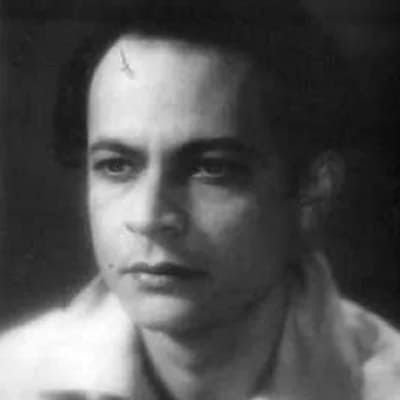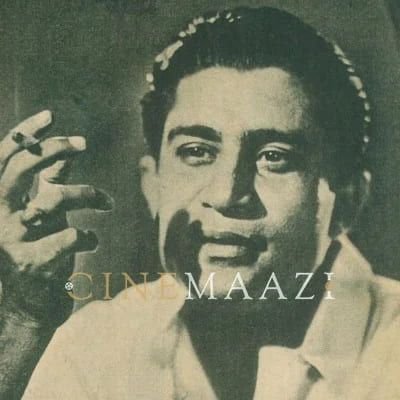This section is for paid subscribers only. Our subscription is only $3700/- for one full year.
You get unlimited access to all paid section and features on the website with this subscription.
Subscribe to read full article
This section is for paid subscribers only. Our subscription is only $37/- for one full year.
You get unlimited access to all paid section and features on the website with this subscription.
Not ready for a full subscription?
You can access this article for $2, and have it saved to your account for one year.
- Release Date02/02/1951
- GenreFiction
- FormatB-W
- LanguageTamil
- Run Time175 mins
- Length4804 meters
- Censor RatingA
- Censor Certificate Number202-A
- Certificate Date30/01/1951
With the help of her lover, the king’s (Serukalathur Sama) young mistress Urvasi (Anjali Devi) usurps his powers by pushing him off a boat, appoints herself the queen, and the kingdom experiences a reign of terror. The palace where the two princes of the kingdom live is burnt. The queen assumes all powers and kills all potential opponents, including her lover. A sage comes to the kingdom with his son and a girl and joins the queen as her adviser. Years roll by. The sage’s son Veerangan (Sahasranamam) is made Army Commander.
At the same time, in the countryside, Karikalan (MGR) functions as the de facto leader of the people, helps them in various ways and fights the queen’s misrule. When he becomes a big threat to the queen, she orders his capture. Veerangan sends Kala (Maduri Devi), the girl raised by the sage as a spy, to Karikalan, but she falls in love with him. Karikalan gets periodic instructions from the Goddess on what needs to be done and he follows the same. The queen gets scared by a ghost that appears regularly and warns her of the impending punishment she deserves for her misdeeds. Kala and Karikalan’s followers are captured by the army.
Karikalan personally leads their rescue mission. In prison, he gets instructions from the Goddess to capture the queen also. He rescues his people, captures the queen, and brings her to his hideout. When the ghost appears there, she confesses her crime of killing the king. When she is about to be executed, Veerangan’s army enters and captures everyone. Veerangan also finds out that the sage (also called Marmayogi) is his father, and he has been giving information to Karikalan secretly. Hence he also gets arrested for being a traitor. The queen returns to her throne and orders the execution of the sage, Karikalan, and others. When Karikalan is about to be killed, the sage reveals the truth about the king and informs Veerangan that Karikalan is his elder brother. When Veerangan demands to know where the king is, the sage removes his disguise. To the surprise of everyone, he reveals that he is the deposed king and narrates what happened. Though the queen and her lover attempted to kill him, he escaped under the water using his yogic skills, taking his sons and the Army Commander’s daughter (Kala) with him. He returned to his kingdom in the disguise of a sage with his younger son Veerangan and Kala and left Karikalan in the forest. Shocked to see the dead king return, the queen dies. The king announces that his children Karikalan and Veerangan are now the rulers.
The popular songs ‘En Manasukkisaindha Raja…’, ‘Azhagana penn maanai paar…’, ‘Desam pora pokka partha, pesa kooda nalla illae…’, ‘Inbam iravil amaidhiyile…’, ‘Kannin karumaniye kalavathi…’ and ‘Vetri sangai oothuvom…’ helped in the film’s success.
Stories of kings and queens, set in historical and geographical unspecified periods and locations, formed a common genre in the early decades of Tamil cinema. In such films, the costume designer and the art director had the license to do as they pleased. Marmayogi belongs to this genre. It even features a tournament contested in the manner of the Knights of the Round Table.
The story is a mix of a legend and a novel - that of Robin Hood of Sherwood Forest and Marie Corelli’s Vendetta. A courtesan gets intimate with the king; soon she plots to kill him and usurp his throne. He survives the assassination attempt and return disguised as a sage and earns a place in her court. His son, the prince, who has been saved by the commandant, grows up it the forest as a do-gooder on the lines Robin Hood, complete with bows and arrows. As the prosecutor of the oppressed, he organizes them against the cruel imposter, the courtesan. He even makes a daring appearance in the court to caution her about her misdeeds - a scene very reminiscent of Robinhood’s (Errol Flynn) dramatic appearance in the royal court, in the film The Adventures of Robinhood (1936). After many sword fights and chases, the sage exposes the courtesan before the citizens; she dies of shock. The prince marries the commandant’s daughter and rules his subjects with a benign hand.
The film was scripted by A S A Swamy, with his friend, M G Ramachandran, in mind; the film made the latter a star. Ramachandran was heavily influenced by Errol Flynn and Douglas Fairbanks. In this film, he fences, swings from chandeliers and creepers, leaps from the ramparts of the fort directly atop a saddled mare, and shoots arrows with amazing dexterity. All this brought him tremendous popularity among film-goers. His name in the film, Karikalan, was borrowed from a legendary Chola king. This synchronized with Tamil revivalism, the spirit of the times.
The “tide” sequence was inspired by Ivan the Terrible (Russian, 1942). The silhouette of Ivan, with his flowing and pointed beard, was even, most probably due to the innocuous ghost scenes, this film was given an ‘Adults Only certificate by the censors.
[from the book Pride of Tamil Cinema: 1931 to 2013, by G Dhananjayan. Blue Ocean Publishers, 2014]

Cast
Crew
-
BannerJupiter Pictures Ltd. (Madras)
-
Director
-
Producer
-
Music Director
-
Lyricist
-
Story Writer
-
Cinematography
-
Editing
-
Sound Recording/ Audiography
-
Art Director/Production Design
-
Action Director
-
Costumes










.jpg)



